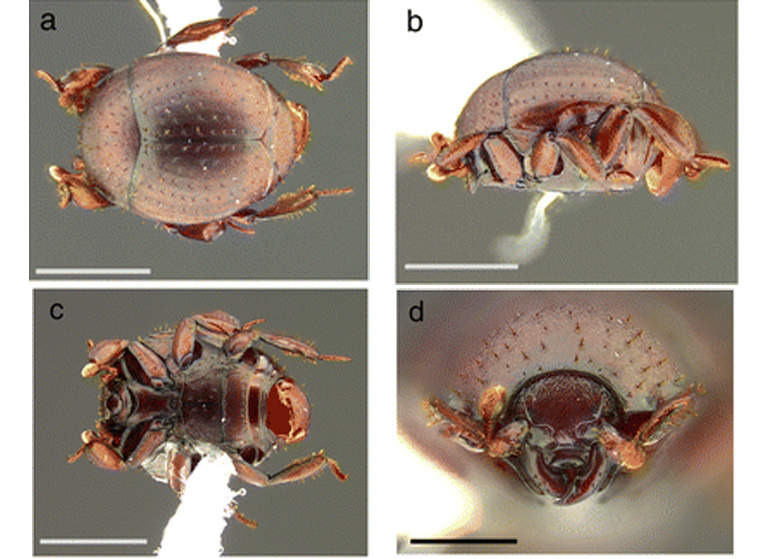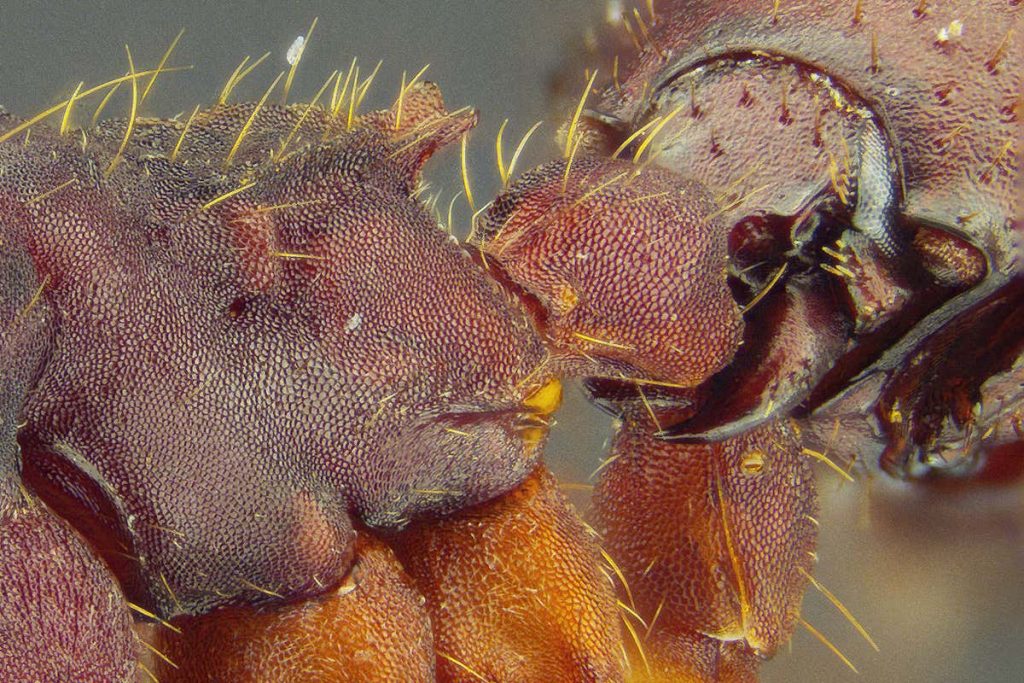
A tiny beetle new to science gets around by piggybacking on army ants.
The newly described species Nymphister kronaueri was discovered only 4 years ago by biologists studying ants in Costa Rica. The researchers noticed something a little peculiar about certain individuals: some of them appeared to have two abdominal segments, one on top of the other.
Looking closer, the researchers realized that the extra segments were actually miniature beetles hitching a ride on the oblivious ants. Upon further investigation, the scientists revealed that the sneaky beetles were able to do so by attaching their mouth parts to the waist of the worker ants. Once attached, the beetles look strikingly similar to the ant’s abdomen — a nearly perfect disguise.

The beetles also produce an ant-appeasing chemical, and have evolved shells that resemble the ant’s own body. As a result, the ants likely have no idea there are hitchhikers in their midst.
Still, the tiny insects are brave to coexist with such creatures; army ants are often feared for their tenacity and aggression, and would generally gobble up such an arthropod without a second thought.
For these guys, however, the risk is worth the reward — getting in with an ant community can be extremely beneficial. The beetles enjoy the perks of the colony environment, which includes plentiful food scraps and protection from predators.

These beetles aren’t the only species that blend in with army ant society for their own benefit. A myriad of other creatures, including millipedes and mites, are also known to sneak their way into colonies to reap the rewards.
WATCH NEXT: Australian Redback Spider Eats Snake




